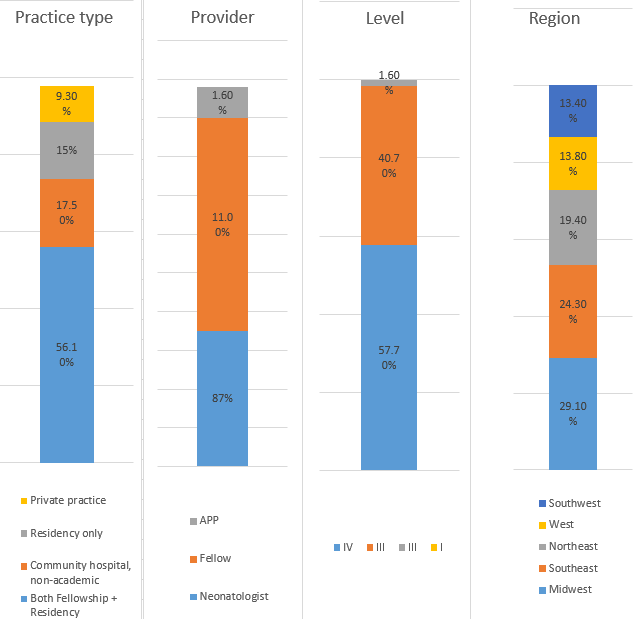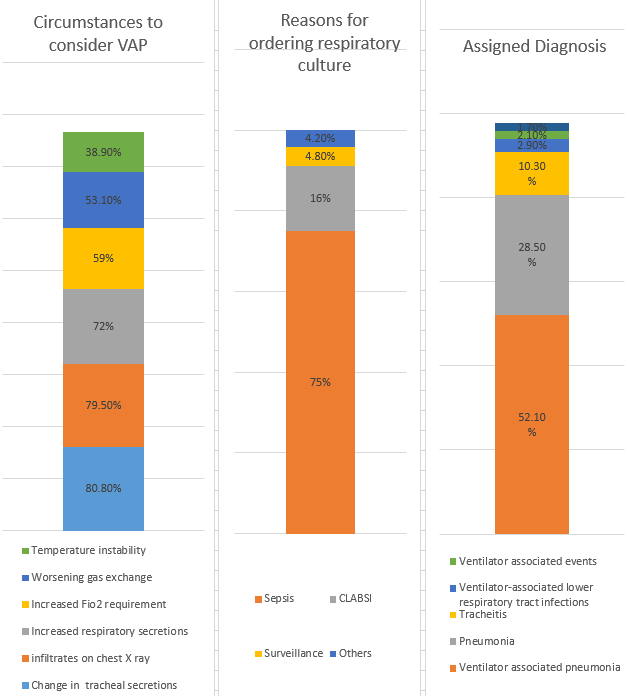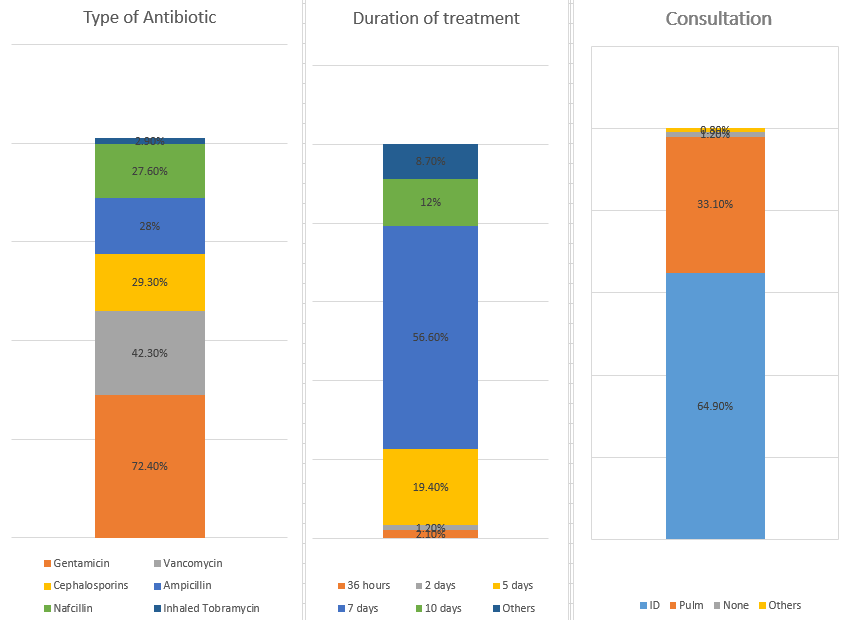Neonatal Infectious Diseases/Immunology
Neonatal Infectious Diseases/Immunology 3
409 - Practice Variation in the management of Ventilator Associated Pneumonia (VAP) in Neonatal Intensive Care Units: A Physician Survey
Publication Number: 409.334

irfan Shehzad, MD
Fellow
Baylor Scott White McLane Children's Medical Center
Temple, Texas, United States
Presenting Author(s)
Background: VAP generally refers to bacterial infection of the lungs in an intubated patient. It is a common type of healthcare associated infection. Infants in the NICU are vulnerable to VAP that increases their morbidity and mortality. There is a significant overlap of clinical features of VAP with other pulmonary pathologies particularly in preterm infants which can make the definitive diagnosis and management of neonatal VAP challenging.
Objective:
The aim of this study was to measure the practice variation and knowledge among neonatal intensive care unit providers regarding the diagnosis and management of VAP.
Design/Methods:
REDCap (Research Electronic Data Capture) survey was emailed to the practicing members (Neonatologists, NICU fellows and Advance practice providers) of the Section on Neonatal-Perinatal Medicine (SoNPM) of American academy of pediatrics (AAP) and Pediatrix Medical Group. We used descriptive statistics to analyze the data from the respondents.
Results:
Of 254 respondents; 87% were neonatologist,98% were from level III and IV NICU, 54% reported having VAP prevention guideline, 46 % were either unsure or didn’t have guideline in their units.77% reported ordering respiratory culture as part of sepsis work up,16% for a potential source of CLABSI and 5% for routine surveillance. 88% stated using Tracheal aspirate technique to collect specimen. Reasons reported for obtaining respiratory culture were; change in character of tracheal secretions (81%), increase in infiltrates on chest X-ray (79%), increase in respiratory secretions (72%), increase in oxygen requirement (59%), worsening of gas exchange (53%). 52% reported establishing a diagnosis of VAP, 28% pneumonia and 10% tracheitis based on positive respiratory culture. 73% stated relying on type of bacteria rather than bacteria burden to start treatment,72% described prescribing IV Gentamicin and 42% IV Vancomycin. 57% would treat positive respiratory culture for a maximum of 7 days, 19% for 5 days and only 12% for 10 days. The reported intradepartmental variation on when to obtain respiratory culture and prescribe antibiotics was 50% and 39% respectively.
Conclusion(s): VAP remains an enigmatic clinical entity with a significant variation in its management. Efforts are needed to expand the studies in order to develop consensus to follow guidelines among providers to effectively prevent, diagnose and treat neonatal VAP. 


